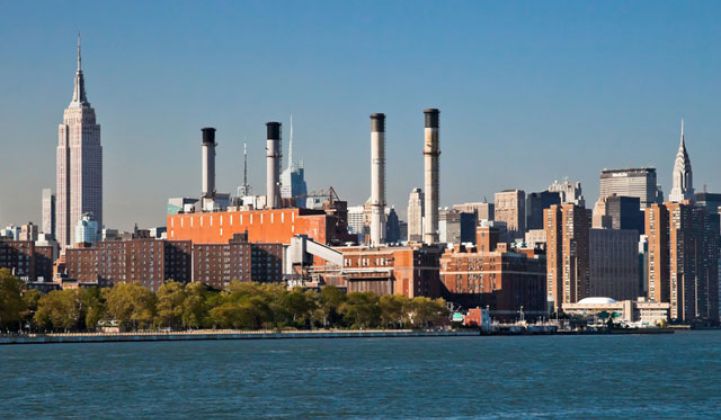For more than two years, New York has been laying the groundwork to build energy markets at the distribution level through its Reforming the Energy Vision (REV) proceeding.
Now, the utilities have provided the first glimpses of how they plan to make the transition into distributed energy platform providers.
New York’s investor-owned utilities filed their first distributed system implementation plans (DSIPs) on June 30. The regulatory filings include both a self-assessment of each utility’s ability to integrate distributed resources and a five-year roadmap. They will be updated every two years.
The filings are immense at more than 300 pages each. They highlight the technologies that most utilities identified as fundamental to managing two-way power flows and real-time data between customers, third parties and grid operators.
Even though most utilities are investing or considering technologies such as advanced meters, distribution automation and GIS, the filings don’t explicitly address how these technologies will combine with price signals in the future to create markets. The end goal of REV is still a long way off.
Here are three statistics that show where the utilities are today and how far they still need to go.
14 Potential Non-Wires Alternatives. New York regulators have asked each utility to consider at least one non-wires alternative project, in which distributed energy resources are used instead of traditional infrastructure investment to meet the grid’s needs. Most utilities, however, are considering more than just one.
Con Edison is in front with the largest single project, Brooklyn Queens Demand Management Program, and also is considering another six, far more than most other utilities. But that will change. All of the DSIP filings include mentions of evaluating non-wires alternatives as part of the capital planning process in the future. In other words, leveraging distributed resources instead of building new substations or installing transformers will be the new way of doing business.
6.8 Million Smart Meters. Nearly every utility identified advanced metering infrastructure as a critical piece of technology to enable distributed energy resources in the future. About half of those will be in Con Edison’s territory, which already has approval to start backend IT work on the project.
Smart meters will allow for more visibility on the distribution system and will be used for system efficiency through applications such as volt/VAR optimization. The one exception was Central Hudson, which has no plans for a full smart meter deployment and is instead piloting an opt-in smart meter program. Central Hudson says it can get many of the benefits that smart meters may provide out of its distribution automation system.
3 Advanced Distribution Management Systems. The utilities aren’t exactly sure of all of the technology investments they’ll have to make in the next decade, but they know they’ll at least need far more advanced systems to control the distribution grids. National Grid, Central Hudson and Avangrid have already made investments in ADMS, which will be coming on-line in the next few years. Other utilities like Con Edison and Orange & Rockland are assessing their ADMS and distributed energy resource management system options.
But those systems may be just the beginning, and the technology spend will likely rise quickly. In California, for example, Southern California Edison is already looking beyond its ADMS and could spend up to $575 million in the next five years alone on cloud computing, software and apps to help manage distributed resources coming on the grid. By comparison, Con Edison’s proposed budget for the distribution system platform is $133 million for the next five years.
Some of the most pressing issues today, such as improving the interconnection process for distributed energy resources and customer data sharing standards, were discussed in the DSIP filings, but solutions were not laid out. More detailed information could be provided on November 1, when the utilities join together to file a supplemental DSIP.
*******
Building on last year’s sold out conference, New York REV Future 2016 will bring together key stakeholders, technology providers, utilities and state policy makers to discuss actionable business strategies to operationalize the ongoing initiative for a clean, resilient and affordable system in New York. Register today and join the conversation.



